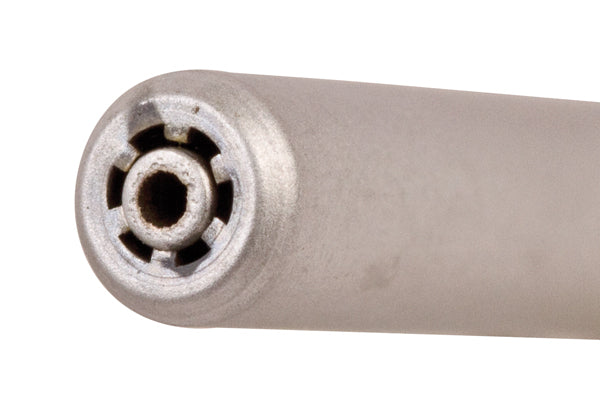Air/water syringe tips are one of the most common products dentists and hygienists use in dental offices. So let's get to know more about the differences between syringe tips and which ones work best for your practice.
Syringe Tip Design
The basic design of the standard air water syringe tip has remained unchanged for decades. The air/water syringe has two concentric passageways, one for air (usually the outer passage) and one for water (usually the inner passage).
The central tube (see image below) is for water. On most standard tips, this tube is longer and projects out the back of the tip. This design allows the water tube to penetrate a small o-ring (#01-06) inside the syringe head to help keep the air and water separate.

Disposable vs Reusable Syringe Tips
On many disposable tips, the inner water passage is the same length as the rest of the tip. This means that these tips require a special adaptor to help keep the air and water separate. If used without an adaptor, they are much more prone to cross-over (Practice Tip #50 and Practice Tip #51). This is one reason autoclavable syringe tips deliver superior performance.
In most syringe tips, air moves through the outer passage of the tip coming out at the end. Sometimes the air expells through a simple gap, but sometimes several holes are used (this aspect of the design can vary widely). Most metallic tips have a series of holes regularly spaced at the end of the tip to allow expulsion of air (see image below).

The consistent spacing of these holes provide a consistent spray pattern (when spraying both air and water mist). As a cost saving measure, many disposable tips simply use the natural “gap” between the inner water line and outer air line of the tip to allow air to escape out the end. Relying on this gap provides inconsistent spacing and irregular spray pattern.
As mentioned, syringe tips at their most basic are simply an assembly of two concentric, round tubes. They go into a round passage in the air water syringe and secure with o-rings. This means you’ve got a round tube in a round hole. It spins.
Syringe Tip Rotation
Many practitioners like to use the syringe tip for retraction and pushes on the cheek with the tip. If pushing with the tip, rotation is not desired. Most syringes are designed for quick changing of tips (change after each patient), which does not normally allow for a mechanism to reduce the ability to spin if pushed on. The DCI rotation lock tips (#01-97) are an exception to this.
The rotation lock tips have a series of “dimples” (see image below) around the perimeter of the tip. These lock in with the ball bearings of the DCI syringe holding mechanism (“collar”), making it harder for these tips to spin. These tips only work in a DCI syringe (#01-01Q or #01-85). Its 6 ball bearings in the collar secure the tips. The ball bearings retract to change tips, so using a design that incorporates the ball bearings does not preclude quickly changing tips either.
With most other syringes, two o-rings (#01-04) are used to hold the tips in place. On some of these, replace one o-ring with a cone (#01-21). Along the length of the cone is a slit (see image below). This slit provides lateral tension making it harder to spin the tip. Normally, use of a cone makes it more difficult to change tips, but it shouldn’t prevent quickly changing tips. Consult with our staff and we will help you determine if you can incorporate a cone in your syringe.
As you can see, many design aspects of the air/water syringe tips affect syringe performance. Keep your needs and uses in mind when purchasing tips and syringes.





LEAVE A REPLY